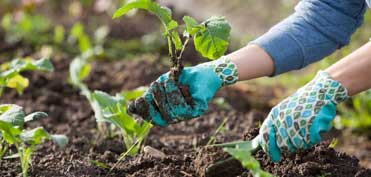There are different types of androgens
produced within the ovaries, adrenal glands and skin in women: Testosterone (T), dehydroepiandrosterone (DHEA),
dehydroepiandrosterone sulphate (DHEAS), and androstenedione (A4).
Androgens are secreted into the bloodstream where they are primarily bound to 2 proteins: sex hormone binding globulin (SHBG) and albumin. Androgens that are not bound to proteins travel freely in the blood, enabling their activity in target tissues. Enzymes present in the skin,
ovaries and adrenals can convert
androgens from one type to another, leading
to the biologically active form known as Dihydrotestosterone (DHT). Alternatively,
androgens can function as precursor hormones which are then converted to estrogens. Enzymes present in the liver, muscles, fat, skin, kidneys or bones
convert metabolites (breakdown) forms of hormones which are eventually excreted
in the urine. Certain situations, such as
obesity, Polycystic Ovarian Syndrome (PCOS), Insulin Resistance, and Congenital
Adrenal Hyperplasia (CAH) can result in overproduction of androgens. By comparison,
conditions which affect the functioning of the pituitary gland, adrenal glands, ovaries, and thyroid may lead to reduced androgen levels.
Women produce the greatest amount of androgens in their 20s-30s, followed by a gradual decrease. By age 40, androgens have decreased by 50% and by age 50, a further 25% reduction in androgens has occurred. Symptoms associated with the reduction in androgens as women age include decreased sex drive (i.e., libido) and decreased ability to have an orgasm (i.e., arousal). It is thought that low androgens
interact with levels of a chemical in the brain, dopamine, to reduce sex drive. In addition to hormones, there are several other factors which influence sexual desire including closeness and communication in a relationship, as well as anxiety, and depression. Hypoactive Sexual Desire
Disorder (HSDD) is the term used to describe decreased sexual desire, not caused by another condition. When a woman reaches menopause at roughly age 51, a reduction in estrogen occurs much more abruptly to undetectable levels compared to the gradual reduction in androgens. As a result, there is a greater proportion of androgens to estrogens in the body. The imbalance of greater androgens compared to estrogens can result in facial hair growth, acne, and scalp hair loss (male pattern baldness).
Androgens, in addition to estrogen, play an important role in maintaining the structure and function of the genitourinary tract. As a woman ages and her androgen levels fall, she may notice anatomic/structural changes
that occur in her vagina, labia, clitoris, urethra,
and bladder. The cervix and vaginal tissues can thin (i.e. atrophy), shrink, and become dry. The pelvic floor muscles may become weak, such that the vagina and bladder can start to protrude through the vagina outside the body, referred to as a prolapse. These symptoms can be very
bothersome, both physically and emotionally
for women. Intercourse can become more painful and less enjoyable; bleeding during and after intercourse can occur. Some women experience more vaginal or urinary tract infections. Testosterone is thought to maintain metabolic function, muscle and bone strength, cardiovascular health as well as mood and cognitive function. Decreased testosterone function with age may therefore contribute to decreased
metabolism, decreased bone density,
depression, cardiovascular disease, as well as changes in concentration and memory.
A great deal of research is currently underway
to understand the roles of androgen and the use of androgen medications in women as they reach menopause. There is much we don’t know about the use of androgen supplementation in women, including long term risks versus benefits. Potential risks of androgen therapy include abnormal hair growth, acne, irreversible deepening of the voice, as well as alterations in liver function and cholesterol. It is important to remain physically active, mentally engaged, maintain a balanced diet, and minimize substance use (smoking, alcohol, recreational drugs) to optimize our health and sexual function as we age. Androgen use, more specifically testosterone, is only approved in postmenopausal women with hypoactive sexual desire disorder (HSDD). Women using testosterone therapy are advised to use transdermal treatments (eg. patches, creams). It is recommended that they undergo bloodwork every 6 months
to monitor their response to treatment and to ensure that androgen levels in their blood are not too high. If women do not notice a benefit by 6 months, they should discontinue use.
In summary, the production of androgens in women and interaction of androgens with other hormones and chemicals in the body is a very complex phenomenon. All women do not produce hormones equally. As a result, a treatment one woman
receives may not be appropriate for another
woman. If you have questions or concerns
regarding menopausal symptoms, it is important to discuss them with your health care provider. A number of supports are available to you. Stay tuned for more information regarding the use of androgen therapy in women in the future!
References:
Davis et al. 2019. Global Consensus Position Statement on the Use of Testosterone Therapy for Women. JCEM 194(10): 4660-4666
Position Statement: The 2017 Hormone Therapy Position Statement of the North American Menopause Society. Menopause 24(7): 728-753
News, Events and Special Messages
Mid-Life Matters Series
Watch for Dr. Renee Morissette and Dr. Angela Baerwald on CTV News at Noon with Jeff Rogstad. A series of short segments, Midlife Matters, on women’s health topics will be presented on some Tuesdays during the noon show. Each topic will have a handout which will be on our website www.menopausecentre.org.
Online Therapy Unit
Our Mission
Enhancing Wellbeing in Saskatchewan
What is Online-Cognitive Behaviour Therapy?
In Online-Cognitive Behaviour Therapy, we share the same information that is normally shared in face-to-face therapy using easy-to-read online materials.
1. Online Application
www.onlinetherapyuser.ca
2. Telephone Interview
306-337-3331
3. Weekly Online Lessons
cognitive behavioural strategies for managing symptoms
4. Registered Clinicians
offering support typically once weekly for 8 weeks
Strengths of Service
Free
Initial Assessment
Evidence-based CBT
Registered Clinicians or Clinical Trainees
No referral needed
Convenient; no travel required
Secure website
Diverse conditions treated
Private and confidential
10 years of service
Ongoing research and quality improvement
Provincial/International partners
Outcomes
50% reduction in symptoms maintained at 1 year follow-up
95% report Online-CBT worth their time
98% would recommend to a friend





